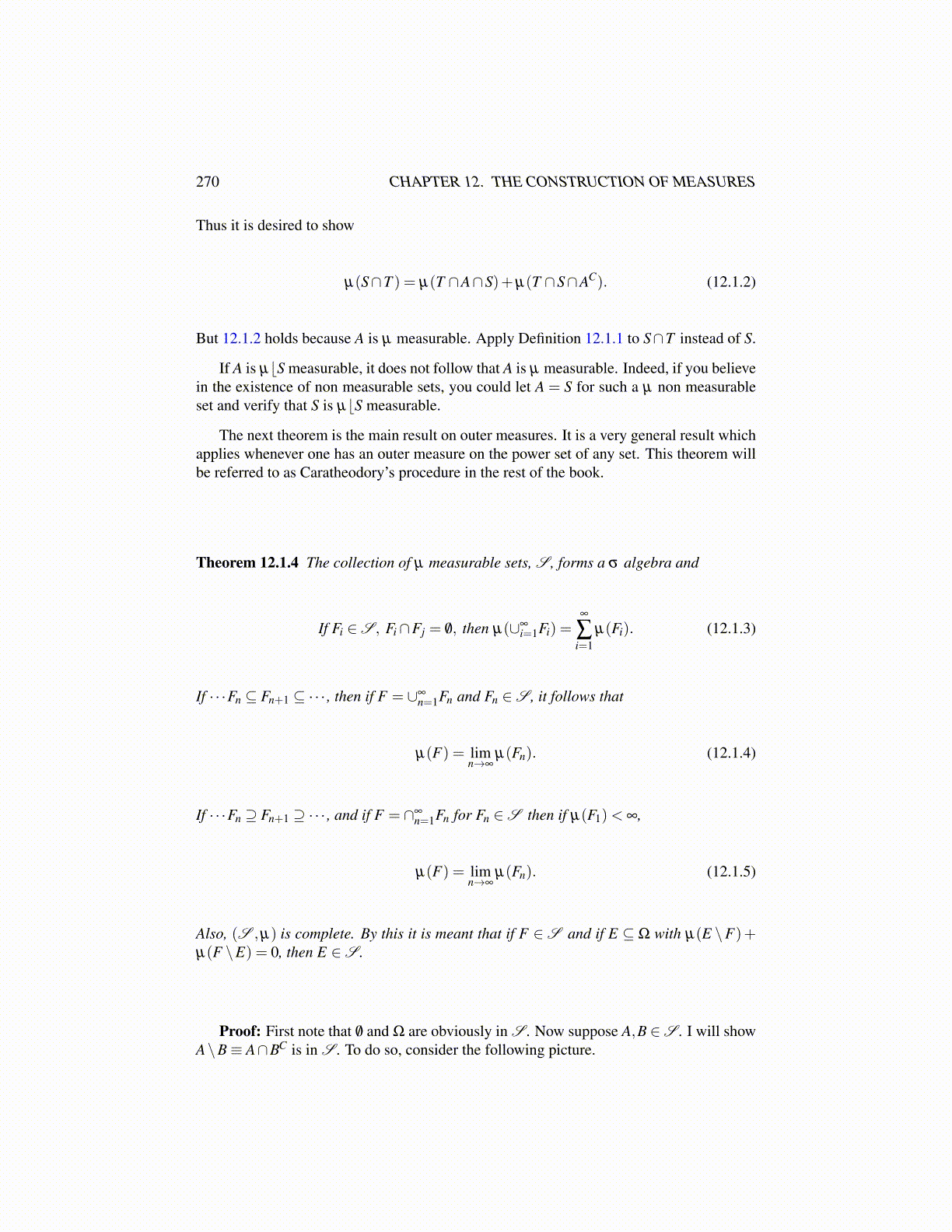
270 CHAPTER 12. THE CONSTRUCTION OF MEASURES
Thus it is desired to show
µ(S∩T ) = µ(T ∩A∩S)+µ(T ∩S∩AC). (12.1.2)
But 12.1.2 holds because A is µ measurable. Apply Definition 12.1.1 to S∩T instead of S.
If A is µ⌊S measurable, it does not follow that A is µ measurable. Indeed, if you believein the existence of non measurable sets, you could let A = S for such a µ non measurableset and verify that S is µ⌊S measurable.
The next theorem is the main result on outer measures. It is a very general result whichapplies whenever one has an outer measure on the power set of any set. This theorem willbe referred to as Caratheodory’s procedure in the rest of the book.
Theorem 12.1.4 The collection of µ measurable sets, S , forms a σ algebra and
If Fi ∈S, Fi∩Fj = /0, then µ(∪∞i=1Fi) =
∞
∑i=1
µ(Fi). (12.1.3)
If · · ·Fn ⊆ Fn+1 ⊆ ·· · , then if F = ∪∞n=1Fn and Fn ∈S , it follows that
µ(F) = limn→∞
µ(Fn). (12.1.4)
If · · ·Fn ⊇ Fn+1 ⊇ ·· · , and if F = ∩∞n=1Fn for Fn ∈S then if µ(F1)< ∞,
µ(F) = limn→∞
µ(Fn). (12.1.5)
Also, (S ,µ) is complete. By this it is meant that if F ∈S and if E ⊆ Ω with µ(E \F)+µ(F \E) = 0, then E ∈S .
Proof: First note that /0 and Ω are obviously in S . Now suppose A,B ∈S . I will showA\B≡ A∩BC is in S . To do so, consider the following picture.